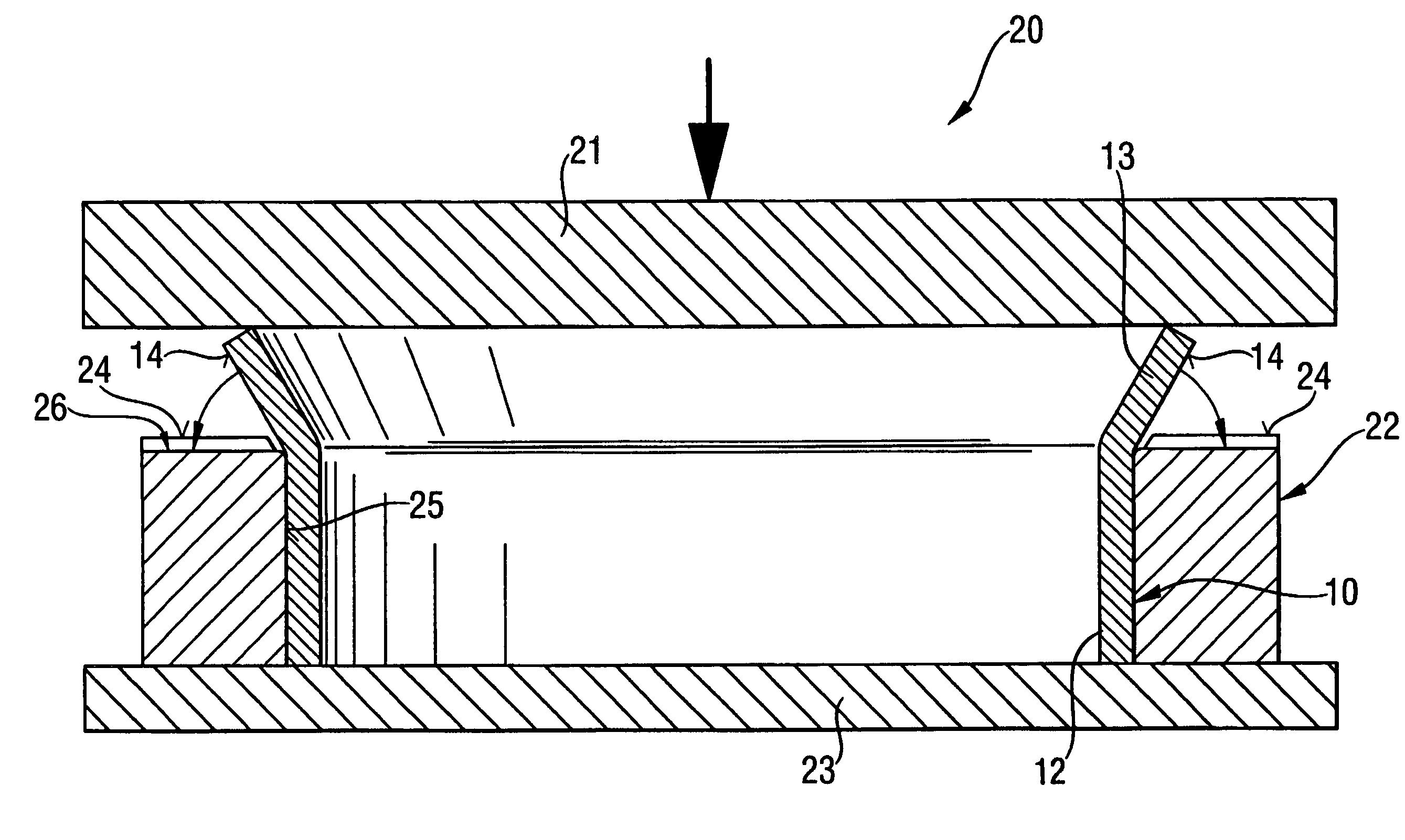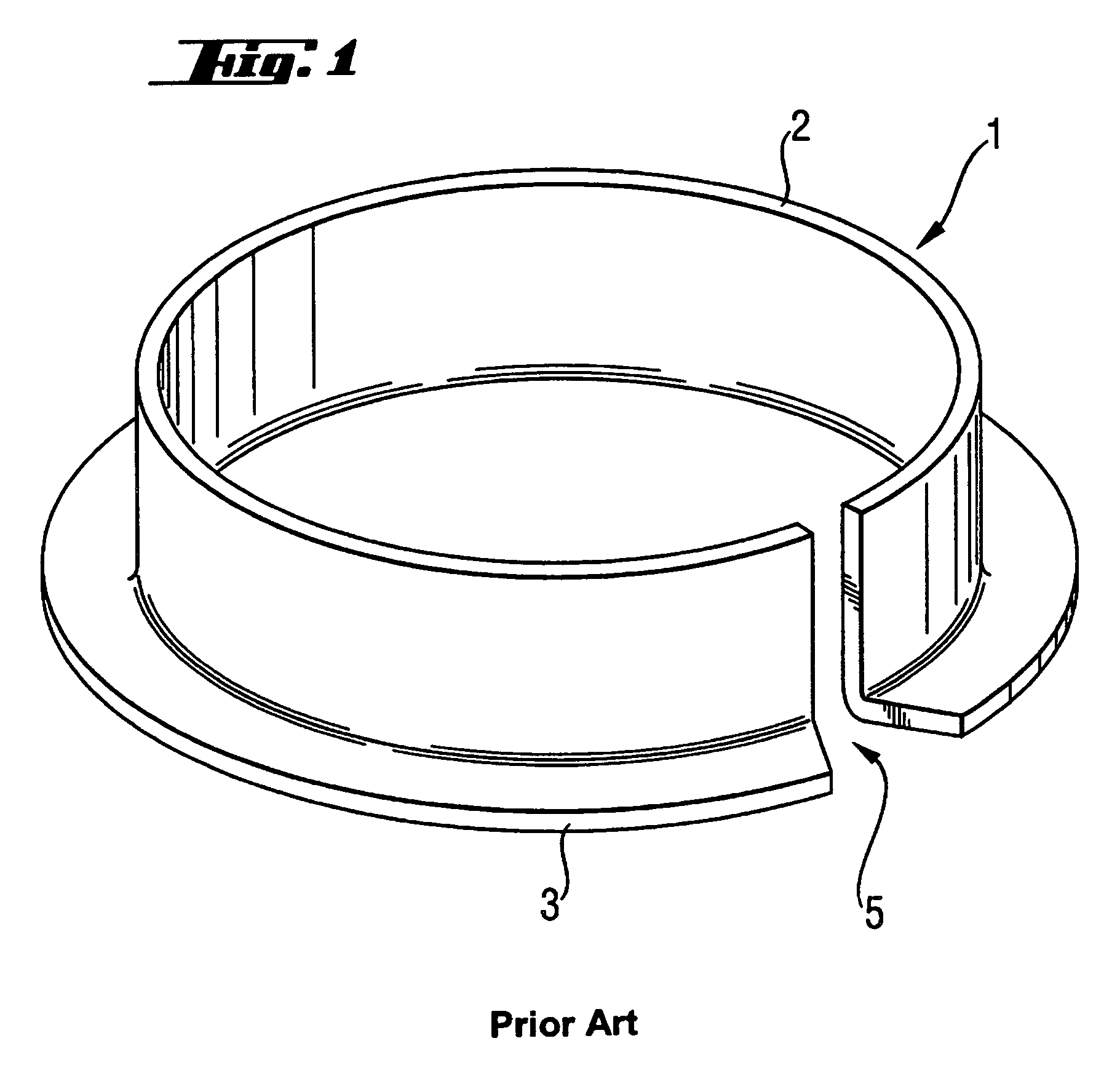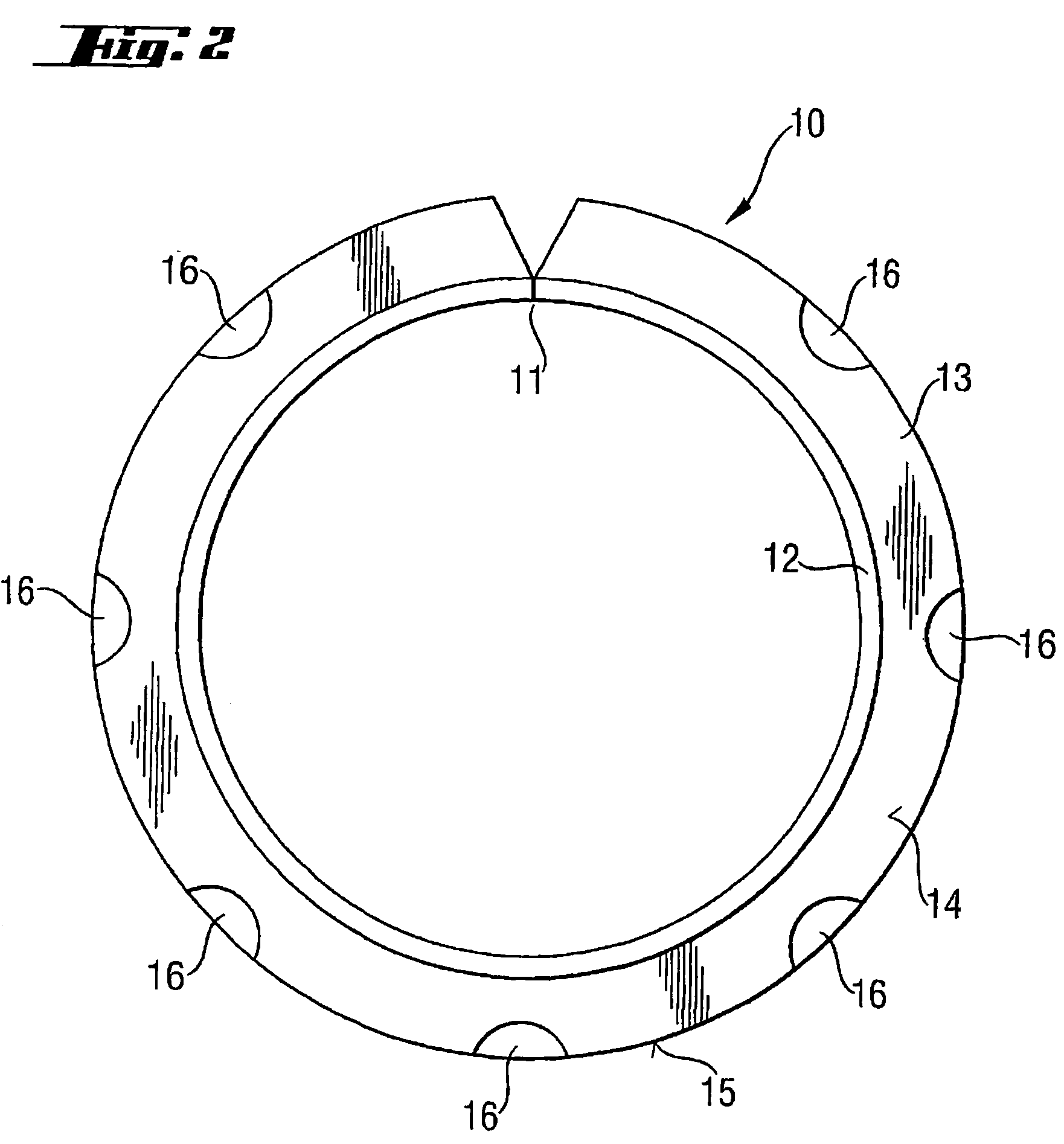Flange sleeve, method for the production thereof and bending tool for producing flanges on a sleeve
- Summary
- Abstract
- Description
- Claims
- Application Information
AI Technical Summary
Benefits of technology
Problems solved by technology
Method used
Image
Examples
Embodiment Construction
[0038]FIG. 1 shows a conventional flanged bush 1, which comprises a cylindrical bush body 2 and a single flange 3 formed thereon, having been produced by bending of the bush edge. As a result of the production process, the flanged bush 1 comprises a considerable butt gap 5.
[0039]FIG. 2 is a plan view of a flanged bush 10 according to the invention, produced by the method according to the invention. This flanged bush 10 likewise has a cylindrical bush body 12 and a single flange 13, which comprises material-displacing recesses 16 on the inner surface 14 of the flange 13 at a plurality of equidistant points in the circumferential direction. In the embodiment of FIG. 2 shown here, the material-displacing recesses are semi-circular in form, such that the recesses widen radially form the inside outwards. The recesses are applied in such a way that they extend as far as into the outer edge 15 of the flange 13. The flanged bush 10 exhibits a closed butt joint 11.
[0040]FIG. 3 is a plan view...
PUM
| Property | Measurement | Unit |
|---|---|---|
| Width | aaaaa | aaaaa |
Abstract
Description
Claims
Application Information
 Login to View More
Login to View More - R&D Engineer
- R&D Manager
- IP Professional
- Industry Leading Data Capabilities
- Powerful AI technology
- Patent DNA Extraction
Browse by: Latest US Patents, China's latest patents, Technical Efficacy Thesaurus, Application Domain, Technology Topic, Popular Technical Reports.
© 2024 PatSnap. All rights reserved.Legal|Privacy policy|Modern Slavery Act Transparency Statement|Sitemap|About US| Contact US: help@patsnap.com










